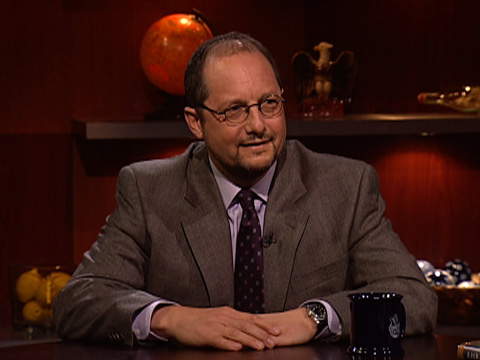A Response To Bart D. Ehrman’s
Misquoting Jesus
Thomas A. Howe, Ph.D.
Jn. 1:18
A Response To Bart D. Ehrman’s Misquoting Jesus I Anti-adoptionist Changes Jn. 1:18.
Jn. 1:18
Concluding his section on the anti-adoptionistic alterations of the text, Ehrman deals with the statement in Jn. 1:18 that, in the critical text, reads, “Θεὸν οὐδεὶς ἑώρακεν πώποτε· μονογενὴς θεὸς ὁ ὢν εἰς τὸν κόλπον τοῦ πατρὸς ἐκεῖνος ἐξηγήσατο.”33 The alternate reading to which Ehrman refers is, “the only begotten Son [ὁ μονογενὴς υἱός] who is in the bosom of the Father… .”34 The difference here is between the use of the word θεὸς and υἱός. Ehrman asserts, “Could it be a textual variant created by a scribe in Alexandria and popularized there? If so, that would explain why the vast majority of manuscripts from everywhere else have the other reading, in which Jesus is not called the unique God, but the unique Son.”35 There is a bit of irony and humor in this assertion. Basically, what Ehrman is saying is that the earliest reading is more likely to be found in the great majority of mss. An Alexandrian scribe supposedly changed υἱός to θεὸς at some early stage, and that is why υἱός appears, as Ehrman phrases, in “the vast majority of manuscripts from everywhere else… .” In other words, because υἱός is early, it appears in the vast majority of mss. But this is the very kind of argument that is one of the primary principles behind the Byzantine-Majority text, a text that Ehrman consistently rejects as having any significance.
In his effort to defend his position, Ehrman demonstrates a complete lack of understanding of the Trinity, or else he is presenting his argument in hopes that those who do not understand the Trinity might be persuaded to accept his view. He says, “The term unique in Greek means ‘one of a kind.’ There can be only one who is one of a kind. The term unique God must refer to God the Father himself —otherwise he is not unique. But if the term refers to the Father, how can it be used of the Son?”36 Of course the Father, the Son, and the Holy Spirit are the unique, one-of-a-kind God. The Father is God, the Son is God, and the Holy Spirit is God—three Persons, one unique God.
Notice that Ehrman gives no consideration to the notion of an argument based on the evidence. Ehrman asserts, “It is far more likely that the oldest form of the text will be found in the oldest surviving manuscripts—on the premise that the text gets changed more frequently with the passing of time.”37 What about the predominating principle in the previous section in which Ehrman dealt with Lk. 3:22: “As we have seen, scribes typically try to harmonize texts rather than take them out of harmony; it is therefore the form of the text that differs from Mark that is more likely to be original in Luke,”38 or the internal evidence that “the ‘more difficult’ reading is more likely to be original.”39 Ehrman offers no reasoning why these canons of textual criticism are not persuasive in his argument. He merely floats the extremely speculative assertion, “Could it be a textual variant created by a scribe in Alexandria and popularized there?”40
Apparently Ehrman recognized that an early anti-adoptionist theological alteration of the text has adverse implications for his thesis that orthodoxy is merely the result of the fact that Christianity, as we now have it, won the socio-political struggle. To have such an orthodox alteration before there was “orthodoxy”—that is, before Christianity won the socio-political struggle and became “the orthodoxy”— presents a counter-example to his thesis. So it became necessary for him to mediate the impact to his own argument by referring to this as “an anti-adoptionistic change of the text made by proto-orthodox scribes of the second century.”41 But, if this is some kind of proto-orthodoxy, how then does one explain its popularity? Its popularity would be predicated on the fact that many people had an understanding of what was and was not orthodox. Additionally, Ehrman does not even make the case concerning how this variant could be anti-adoptionistically motivated. If “orthodoxy” had not won the struggle yet, why would there be any need for anti-adoptionistic alterations this early? In fact, in the literature, the Jn. 1:18 passage does not seem to have played much of a part, if any, in the Adoptionistic-Monarchian controversy.42 [1]
33 “No one has seen God at any time; the only begotten God who is in the bosom of the Father, He has explained Him.”
34 ὁ μονογενὴς υἱός ὁ ὢν εἰς τὸν κόλπον τοῦ πατρὸς ἐκεῖνος ἐξηγήσατο.”
35 Ehrman, 162.
36 Ibid., 164.
37 Ibid., 129.
38 Ibid., 159.
39 Ibid., 131.
40 Ibid., 162.
41 Ibid.
42 See for example, Jaraslov Pelikan, The Emergence of the Catholic Tradition (100–600), vol. 1, The Christian Tradition: A History of the Development of Doctrine (Chicago: The University of Chicago Press, 1971).
[1]Christian Apologetics Journal Volume 5. 2006 (vnp.5.2.12). Matthews, NC: Southern Evangelical Seminary.

